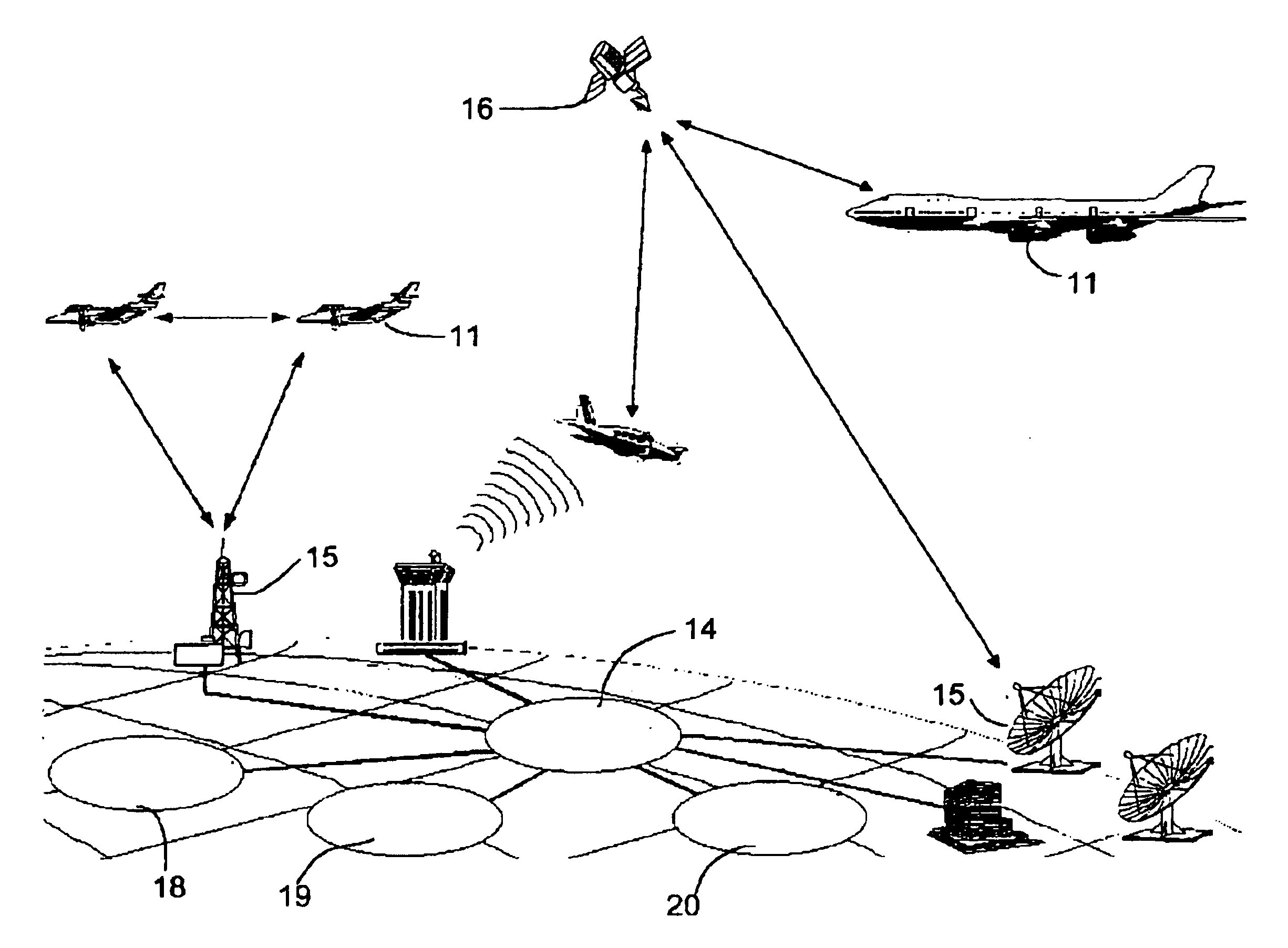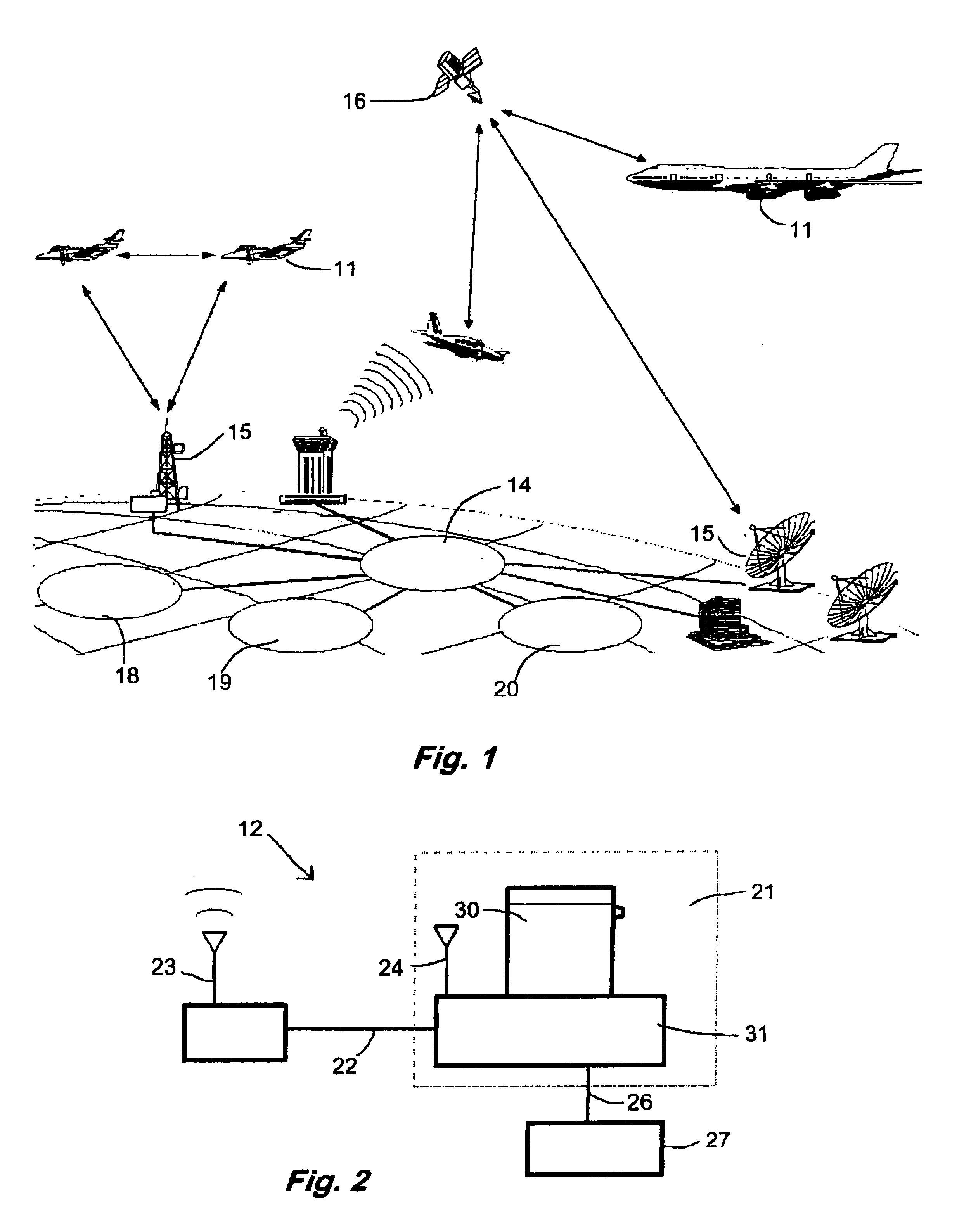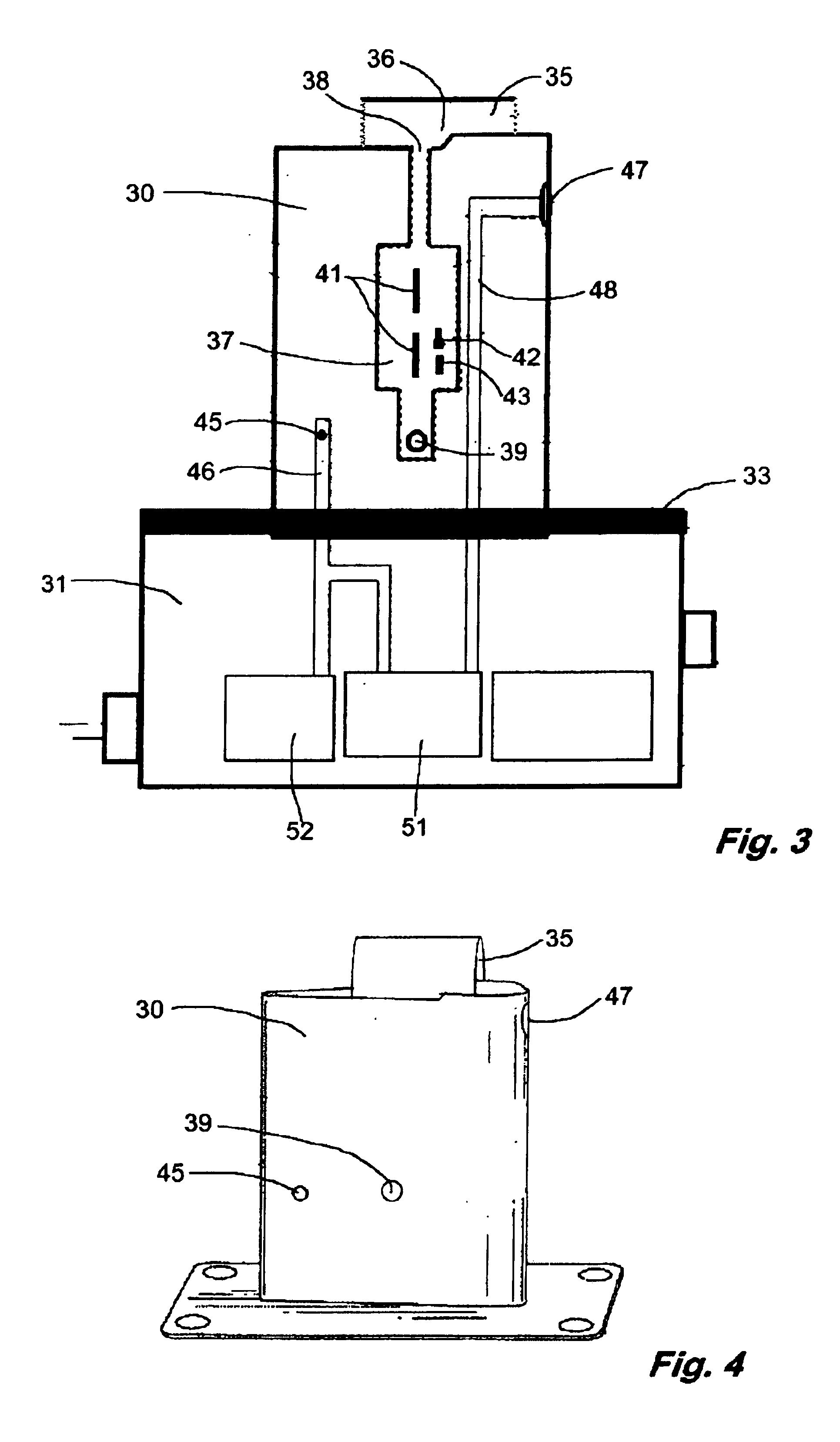Method, apparatus and system for sensing air borne hazardous materials
a hazardous material and air technology, applied in the field of chemical, biological, radioactivity and air pollution detectors, can solve the problems of cumbersome, bulky, difficult to rapidly deploy, and not intended for continuous measuremen
- Summary
- Abstract
- Description
- Claims
- Application Information
AI Technical Summary
Problems solved by technology
Method used
Image
Examples
Embodiment Construction
[0015]Referring now to FIGS. 1 and 2, a system embodying features of the present invention includes aircraft 11 equipped with hazardous material sensing apparatus 12, and a ground network 14. The ground network 14 includes communications towers 15, for receiving data from the sensing apparatus 12, linked to computers that store and analyze the data. Preferably the aircraft 11 and ground network 14 are linked through communications satellites 16. The ground network 14 may further include links to government agencies such as the National Weather Service 18, the NOAA / Meteorological Modeling Labs 19 or a DOD Analysis Facility 20.
[0016]The sensing apparatus 12, as shown in FIG. 2 has a GPS unit 24 and a sensor 21, linked by a first data line 22 to a transceiver 23 and by a second data line 26 to a heading module 27. The sensor 21 provides an ASCII or binary output via the first data line 22 directly to the transceiver. The GPS unit 24 provides time, position and altitude tagging of the d...
PUM
| Property | Measurement | Unit |
|---|---|---|
| shape | aaaaa | aaaaa |
| temperature | aaaaa | aaaaa |
| humidity | aaaaa | aaaaa |
Abstract
Description
Claims
Application Information
 Login to View More
Login to View More - R&D
- Intellectual Property
- Life Sciences
- Materials
- Tech Scout
- Unparalleled Data Quality
- Higher Quality Content
- 60% Fewer Hallucinations
Browse by: Latest US Patents, China's latest patents, Technical Efficacy Thesaurus, Application Domain, Technology Topic, Popular Technical Reports.
© 2025 PatSnap. All rights reserved.Legal|Privacy policy|Modern Slavery Act Transparency Statement|Sitemap|About US| Contact US: help@patsnap.com



